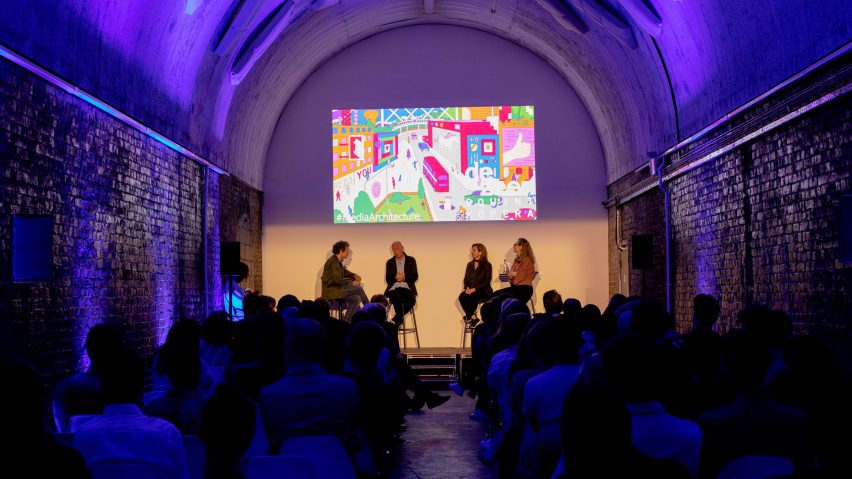
Architects have the "opportunity to be bold with media facades"
Dezeen promotion: Improving sustainability, encouraging community and helping people navigate the data economy are some of the things that media architecture can offer.
Creative studio Squint/Opera and Dezeen hosted a panel on the topic of integrating and embedding sensors, screens and interactive media façades in architecture, public art, and the role this can play in urban life.
Squint/Opera founding director Alice Britton was joined on the panel by UNStudio founder Ben van Berkel, Ava Fatah gen. Schieck, a professor at the Bartlett School of Architecture. Dezeen editor-in-chief Marcus Fairs chaired the discussion.
Media architecture can include any structures with integrated displays, such as the moving visuals on a digital billboard or a shop window that lets users share their selfies.
However Britton urged designers to look beyond standard displays to find ways of "making the invisible visible, bringing the inside out, displaying the narratives of a building" to create "a new, engaging way of telling stories about architecture".
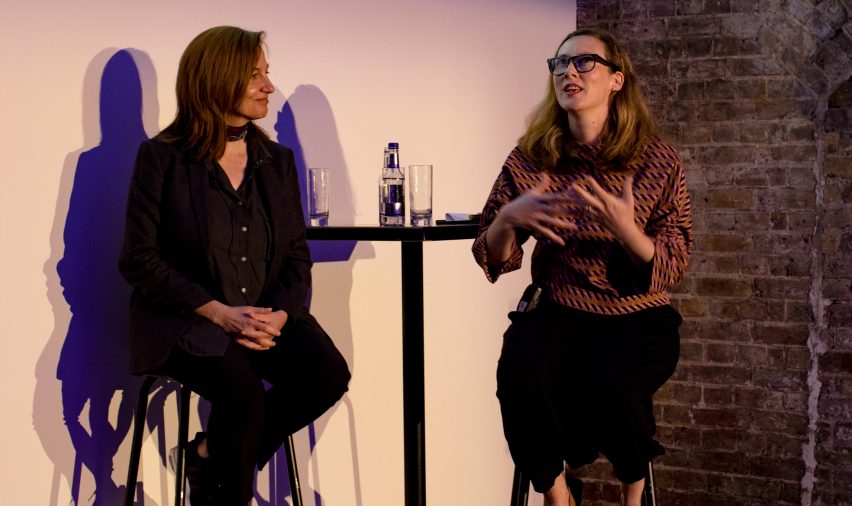
"I just think there are so many opportunities to be bold with media facades," said Britton.
"In terms of sustainability, there is a lot of data collected on the way people use buildings, but very few people use it to bring about change," she added.
Britton suggested that architects could create interactive facades that would display the energy consumption of buildings. This could then turn saving energy and water into a game by creating competition between neighbours.
In a recent award-winning project Squint/Opera turned the ground floor of the Weill Cornell Medical Institute into an "animated embodiment of the institute's work" using 2,800 miniature digital screens, which communicate elements of the centre's research.
The mini screens are arranged in a grid formation, with each one set behind a circular acrylic disc, making the display look like petri dishes or microscope slides.
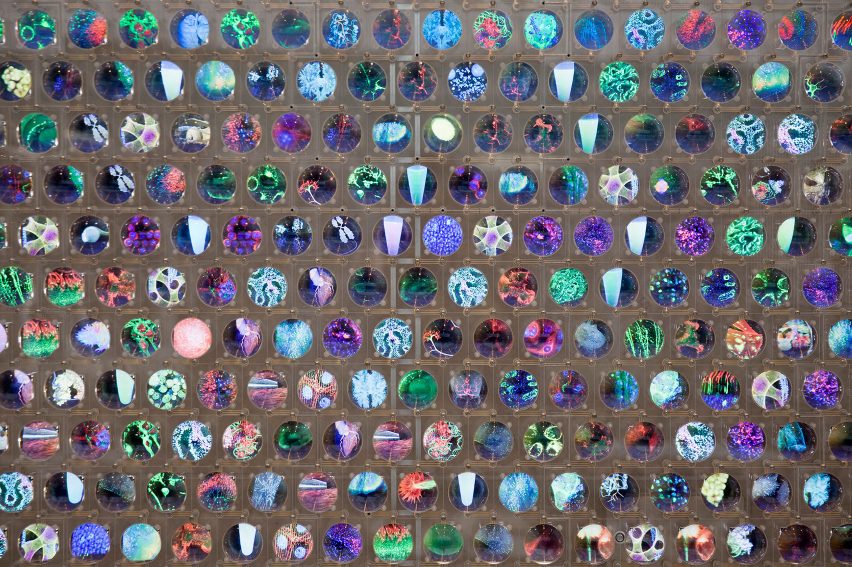
"Moving closer to a micro scale you see that actually these animated pixels of light are in fact incredibly detailed, high resolution imagery and text. As when looking through a microscope, the viewer is rewarded with discovery."
All of the hardware that the Squint/Opera team developed for the Weill Cornell Medical Institute was bespoke, designed from scratch and installed on site.
The studio also designed a custom content management system to allow the research centre to update the display, which is delivered by an algorithm with access to the institute's database.
"No one is suggesting we turn cities into Time Square," continued Britton. "There are lots of small, beautiful and intricate ways of weaving media into things. It’s not all enormous billboards."
"You should use technology for good," Van Berkel added. "Clients might want a media facade, but architects should not promote the most commercial facade."
Instead, he said, architects should look at ways that media architecture can use the data it creates or collects to inform human-centric design that improves the lives of the people and communities who interact with it.
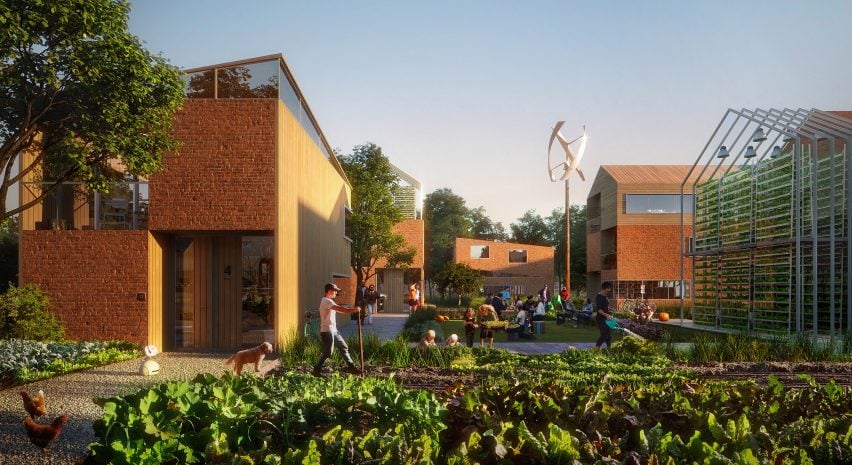
Architects should use media architecture to embrace the kinds of technology being embedded in products coming out of Silicon Valley in order to help buildings better serve their users, he suggested.
"When you look at the number of sensors in a Tesla car versus the amount of sensors in a building, you see that architecture has fallen behind the iPhone age," the UNStudio founder said.
Currently the practice is masterplanning a new settlement in the Netherlands where residents will grow their own food, and harvest renewable energy.
They will also be educated on how the data they produce by interacting with their built environment can be both privacy-protected and used to make their community more energy-efficient.
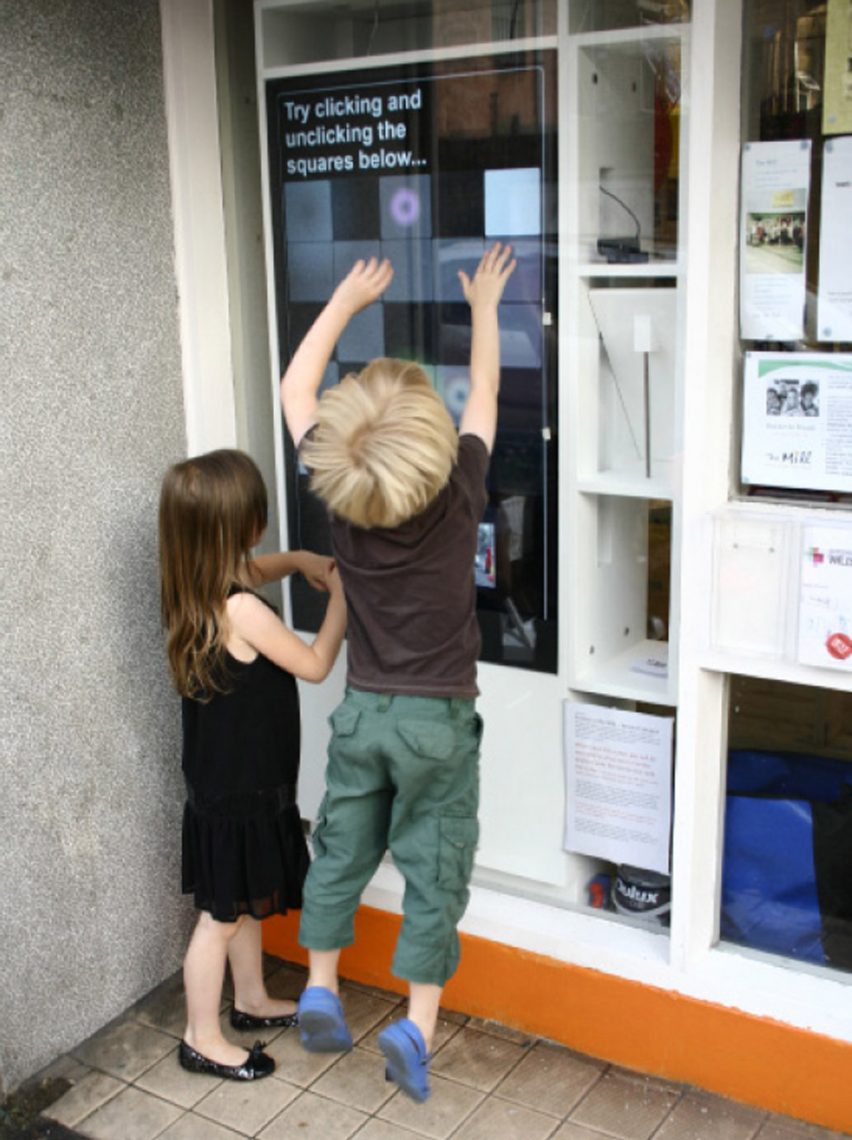
Academic Ava Fatah gen. Schieck recently worked on an experiment to study how people would interact across networked urban scenes.
Called Moment Machine, booths allowed passersby to take photos of themselves that are accessible in other locations across London. Communities built up around the machines, she said, with people developing their own sets of rules for interacting with the architecture.
Children would compete with each other over who could jump the highest, people brought their dogs along to show each other, and street cleaners returned each morning to create ever more elaborate tableaux together.
"We were always surprised," Fatah gen. Schieck said. "Almost every person on the street had a different way to think about it."
As media architecture widens its scope, planning bodies will need to race to regulate this new kind of technology: "City planners and decision makers need to catch up."